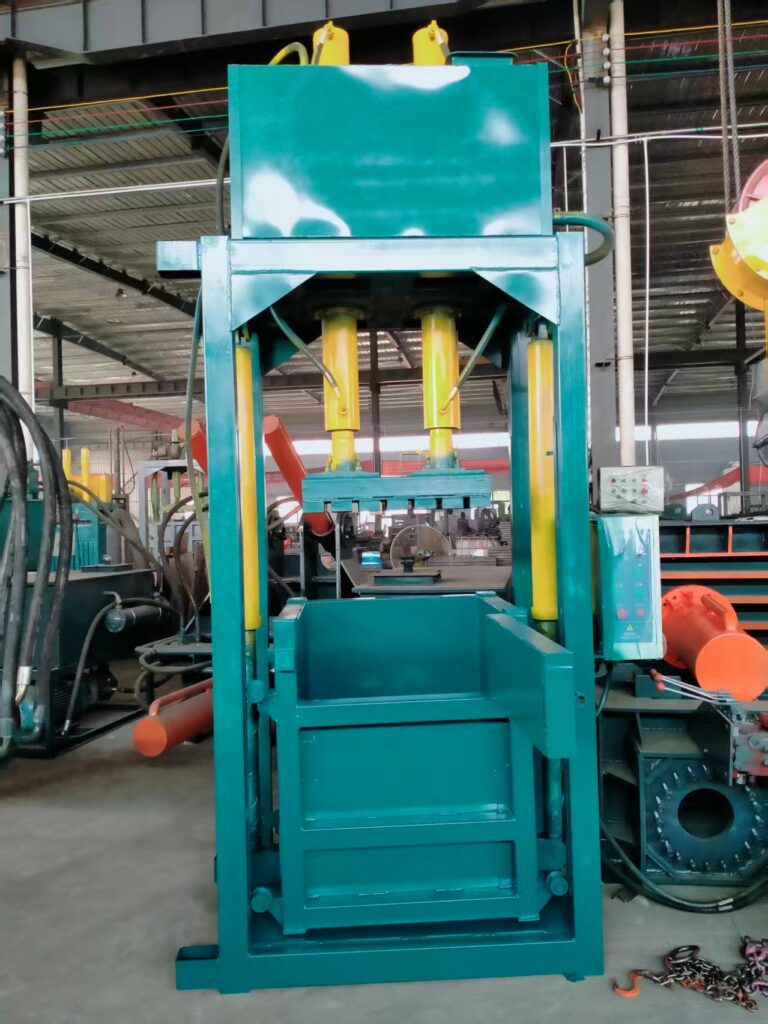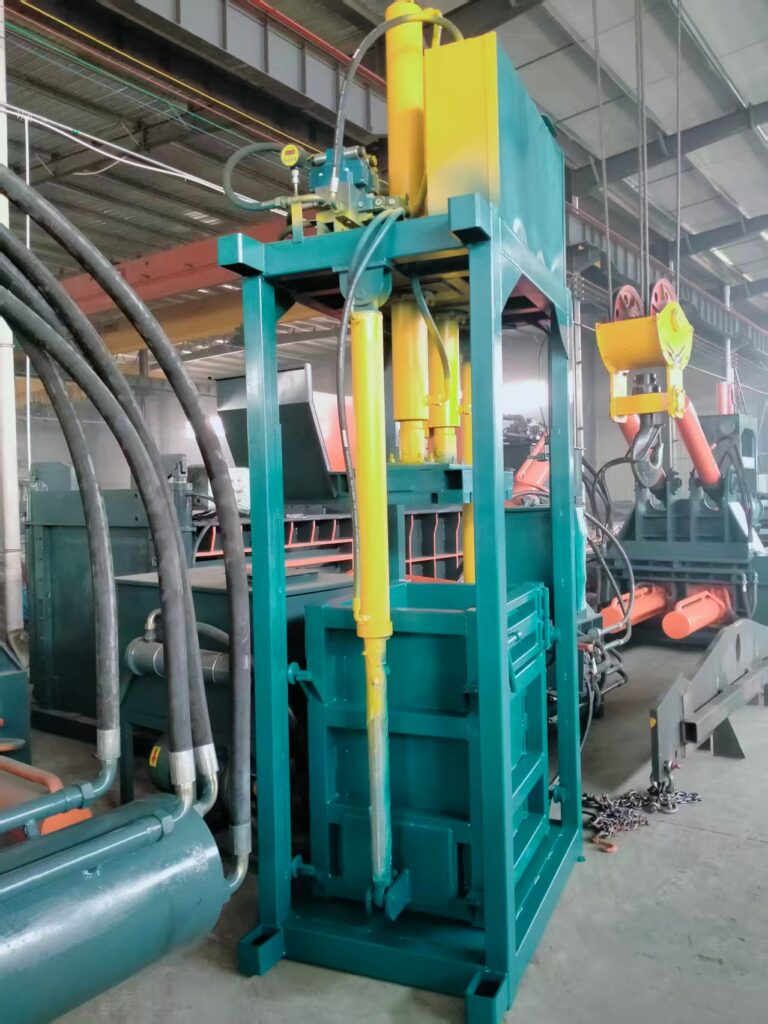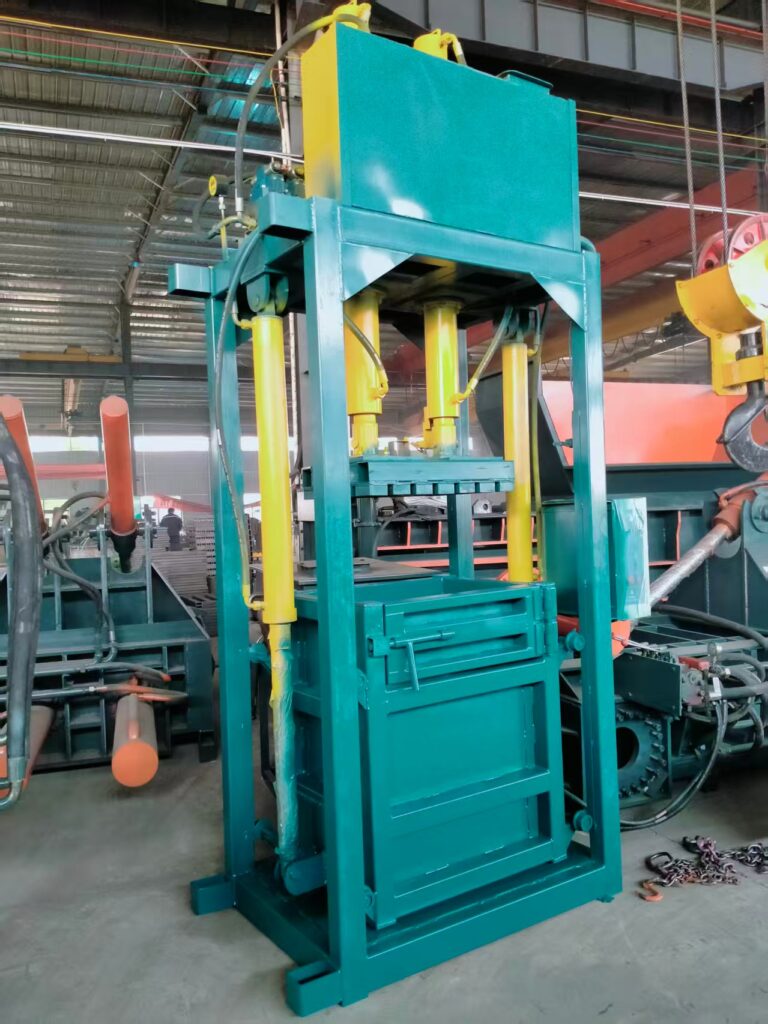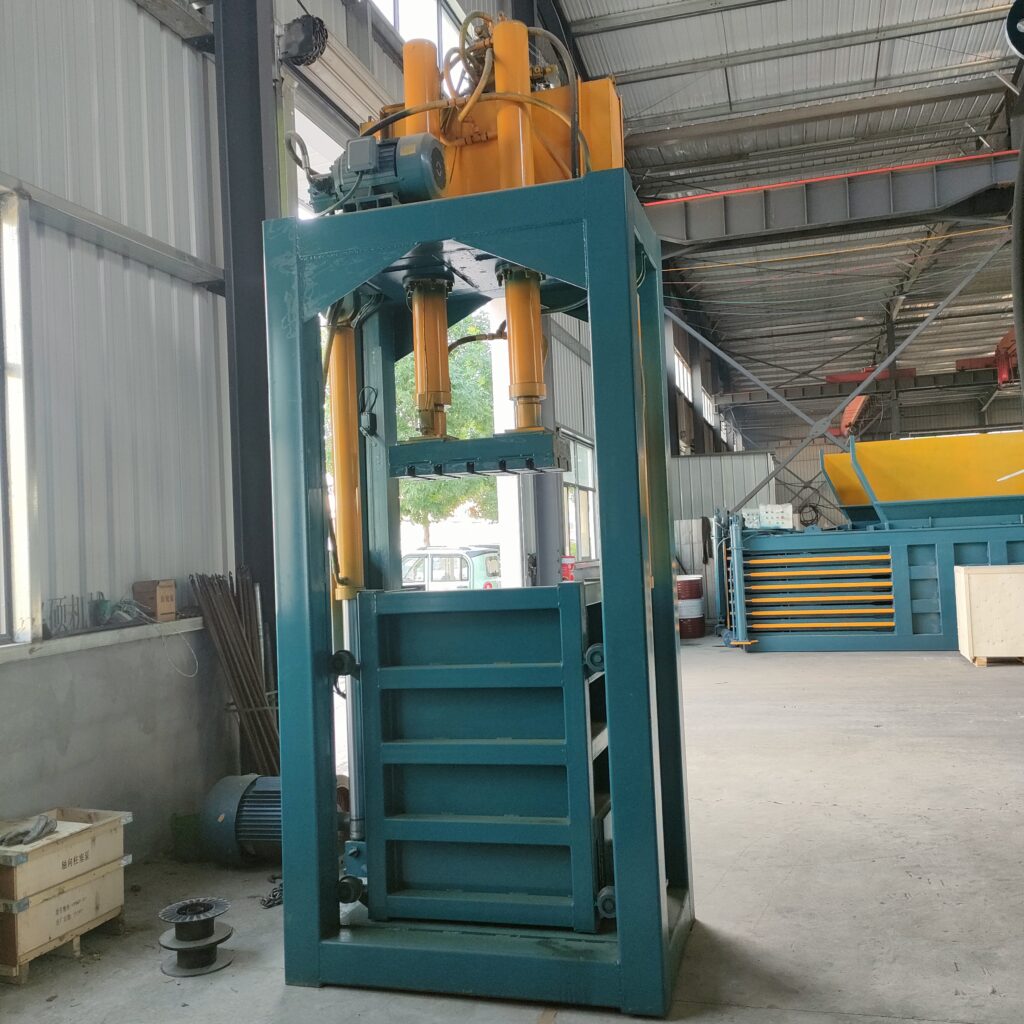Introduction
Waste management has become one of the most pressing operational challenges for businesses in nearly every sector. From manufacturing plants to supermarkets, warehouses to retail stores, the amount of cardboard, plastics, textiles, and packaging waste generated every day is enormous. Without proper handling, these materials not only eat up valuable floor space but also drive up disposal costs and reduce overall efficiency.
For years, large horizontal balers have been viewed as the standard solution for industrial recycling. But for many companies—especially small and medium-sized businesses—the size, cost, and complexity of horizontal systems present significant barriers. This is where the Vertical Hydraulic Baler steps in. Compact, powerful, and cost-effective, vertical balers are reshaping how companies think about recycling.
This article uncovers the untold story of vertical hydraulic balers, focusing on how they optimize space, improve efficiency, and ultimately boost profitability.
The Space Factor: Why Size Matters in Waste Management
Space is often overlooked in discussions about recycling equipment, yet it is one of the most critical factors in a business’s operational success. Every square meter of a facility can translate directly into storage capacity, workflow efficiency, or production volume. When that space is instead occupied by waste piles or oversized machinery, the result is inefficiency and lost revenue.
Traditional waste storage challenges:
-
Uncompacted cardboard boxes and plastic films can quickly consume warehouse floor space.
-
Frequent pickups by waste haulers require staging areas for loose materials, adding further clutter.
-
Large horizontal balers require a dedicated installation area, often with additional conveyor systems.
The vertical baler advantage:
-
Compact footprint: Most vertical hydraulic balers take up only 2–4 square meters, making them suitable for tight spaces.
-
Flexible placement: They can be positioned against a wall, in a corner, or even in backrooms of retail stores.
-
No special installation: Unlike horizontal balers, vertical balers do not need extensive pit construction or conveyors.
For businesses operating in dense urban environments—such as supermarkets, distribution centers, and shopping malls—the ability to install a baler without sacrificing valuable square footage is a game-changer. The vertical baler transforms wasted space into organized recycling areas, freeing up room for activities that actually generate income.
Efficiency Redefined: Streamlining Waste Handling

In modern business, efficiency is not just about speed—it’s about doing more with fewer resources. Waste handling is often a hidden inefficiency, with employees spending excessive time managing loose materials.
Problems with traditional waste management methods:
-
Staff spend hours breaking down cardboard manually.
-
Loose waste requires frequent collection, increasing labor costs.
-
Handling waste multiple times before it leaves the facility results in wasted effort.
How vertical balers improve efficiency:
-
Rapid compaction: Cardboard, plastics, textiles, and aluminum cans can be compacted into dense bales in minutes.
-
User-friendly operation: Simple hydraulic controls allow any trained staff member to operate the machine.
-
Reduced handling steps: Waste goes directly from generation to baling, eliminating interim storage.
-
Time savings: One vertical baler can replace dozens of hours of manual handling per week.
Consider a mid-sized grocery store. Before adopting a baler, staff may spend several hours each day flattening boxes, transferring them to dumpsters, and scheduling pickups. With a vertical baler, waste goes straight into the machine, is compressed, tied, and stored as neat bales—ready for recycling collection. The result: smoother operations and happier employees.
Profitability: Turning Waste into Value

Waste management is often seen as a cost center, but with the right equipment, it can become a profit driver. Vertical balers help companies achieve this in multiple ways.
1. Lower disposal costs
-
Loose waste takes up more space in dumpsters, leading to more frequent pickups.
-
Compact bales maximize container space, reducing haulage frequency.
-
Some companies report up to a 50% reduction in waste collection costs.
2. Generate recycling revenue
-
Dense, uniform bales are valuable commodities. Recycling companies pay more for baled cardboard, plastics, and textiles compared to loose materials.
-
A steady stream of compact bales allows businesses to negotiate better rates with recyclers.
3. Reduced labor costs
-
Time saved on manual waste handling translates directly into reduced payroll expenses.
-
Staff can focus on revenue-generating tasks instead of waste management.
4. Extended equipment lifespan
-
Vertical balers are simpler in design compared to large horizontal balers, which means lower maintenance costs and longer operational life.
By converting waste from a liability into an asset, vertical hydraulic balers offer a clear return on investment (ROI). For many businesses, the payback period for a baler can be as short as 12–18 months.
Applications Across Industries

The versatility of vertical balers is one of their most attractive features. They are not limited to a single type of waste stream or industry.
-
Retail & Supermarkets: Cardboard packaging and plastic films.
-
Manufacturing: Fabric scraps, rubber, plastic containers.
-
Warehousing & Distribution: Pallet wrap, shipping materials.
-
Hospitality & Hotels: Laundry textiles, cardboard packaging.
-
Recycling Centers: Small-scale sorting and compaction.
Their adaptability makes them particularly appealing for businesses that generate moderate amounts of waste but cannot justify the space or cost of a horizontal baler.
Environmental Impact: A Step Toward Sustainability

Beyond financial benefits, vertical balers play an important role in advancing sustainability goals. By compacting recyclable materials into dense bales, they increase the likelihood that materials are properly recycled instead of ending up in landfills.
-
Lower carbon footprint: Fewer collection trips reduce transportation-related emissions.
-
Encouraging recycling culture: Easy-to-use balers make recycling more accessible for staff.
-
Supporting circular economy: High-quality bales can re-enter the production cycle, reducing the need for virgin materials.
For businesses striving to improve their ESG (Environmental, Social, Governance) reporting, investing in vertical balers demonstrates a tangible commitment to sustainable practices.
The Future of Vertical Hydraulic Balers
As industries move toward more compact, automated, and cost-effective solutions, vertical hydraulic balers are gaining more recognition. Future developments may include:
-
Smart monitoring systems for bale counts, machine health, and predictive maintenance.
-
Hybrid models with semi-automatic tying systems.
-
Integration with recycling logistics to streamline pickup scheduling.
With urbanization, rising waste volumes, and increasing environmental regulations, the demand for compact and efficient baling solutions will continue to grow.
Conclusion
The story of vertical hydraulic balers is one of practicality, adaptability, and hidden potential. By optimizing space, improving efficiency, and increasing profitability, these machines offer far more than just waste compaction—they provide businesses with a competitive edge in both operations and sustainability.
In a world where floor space is precious, labor costs are rising, and environmental responsibility is no longer optional, the vertical hydraulic baler proves itself as more than just a piece of equipment. It is a strategic investment that transforms waste management from a burden into a profit-generating opportunity.
Space. Efficiency. Profit. That is the untold story of vertical hydraulic balers—and one that every business should consider telling for themselves.
